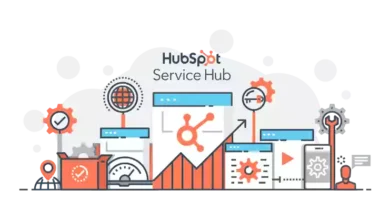Six Leading UI Design Trends To Follow In 2021

In today’s mobile-first world, your website design needs to be more than just functional.
It also needs to look good and deliver a great user experience on a wide range of devices.
The current trend in design is to have a website that’s both mobile-friendly and user-friendly. That means that no matter what device you’re using, whether it be an Android smartphone, iPhone, iPad, or even a tablet computer, there are certain expectations set for your audience that must be met in order to achieve success.
What is a responsive website?
In simple terms, it’s a webpage that automatically changes its layout depending on what device you’re using to view it on. It makes use of proportion-based grids so users can easily read everything from phones through tablets to desktops. It also takes into account pixel density (retina displays). Why should you consider having a responsive website? Having a mobile version or a mobile app isn’t enough anymore. Google’s algorithm now favors responsive websites in their search engine rankings. With over half of internet traffic expected to be from mobile devices next year, it is important that your website caters to them.
Responsive web design has been around for quite some time now but many people are still unaware that there’s anything called ‘responsive’. For those who don’t really know what I’m talking about let me explain briefly: Responsive Web Design (RWD) is a way of designing websites so they can be viewed across all devices. The idea behind RWD is that no matter whether someone views your site on an iPhone, desktop PC, or any other device your content will always be visible and easily navigable.
It also automatically works on all the different smartphone and tablet sizes. It increases convenience for users by allowing them to quickly load your website from anywhere no matter what device they are using which is especially useful when they are on the go. As a result, conversions can increase when people can access certain features or information more easily.
What are some advantages of having a responsive website?
The key thing about responsive web design is its fluidity and flexibility; it aims to provide users with optimal viewing experiences across different platforms and devices, regardless of the device’s screen size or resolution.
If you’re still unsure if responsive web design is right for your website, here are 4 reasons why it might be worth considering:
(1) There is one codebase, not several. If you have a content management system that’s responsive then updates to your site will be made available across all devices without having to manually update each one separately.
(2) Your website will work seamlessly on different devices – look good and work well whether it is a desktop computer or large screen TV.
(3) Google likes it! In April 2015 Google released an update stating that sites using Enhanced Mobile Pages would rank higher in mobile search results than those which were not. In July 2015 they announced updates to this effect, leading experts to conclude that if your site does not load quickly enough for mobile users, you could be penalized by Google in terms of your search engine rankings. This applies across the board but especially to mobile users who may be on the go and need to access information as quickly as possible.
(4) You will cut down your web development time drastically. Instead of having to build a separate website, you only have one to maintain. So building your website has many benefits: it’s easy for you and cost-effective too!
5 essential elements of responsive website design are as follow-
1) Size
One of the most important aspects of responsive design is fluidity, which refers to resizing website elements based on different screen sizes. The purpose behind this is that when someone accesses your site via a phone compared to accessing it via a laptop or PC, they should still be able to accomplish the same goals and tasks on both devices without any distractions caused by resizing or scrolling. This can be accomplished by using relative units such as percentages as opposed to fixed units such as pixels.
Designers must understand the different resolutions of screens and how they affect site layout. The most common desktop monitor resolution is 1280 x 1050 pixels but we use an online tool like Google Analytics or Adobe Edge Inspect to profile our visitors’ most likely devices. We can then use this data to create content that looks great on every device.
No matter what platform your website is viewed on, it should adapt to fit the available space without disrupting the user’s experience. Text-heavy websites might compress their font into a smaller size while images may shift around the layout.
2) Layout
One of the main advantages of responsive design is that it allows you to build a single website and change the layout, font size, and even color scheme depending on the browser size. That means instead of having four different websites (or master pages) for mobile, tablet, laptop, and monitor we can use one responsive site with multiple layouts.
A responsive design means that a person’s experience will be the same across different devices. This is particularly important when it comes to things such as navigation, images, and text. Currently, there are two popular approaches to responsive web design:
– Fluid grids
– Flexible images
3) Content
Content is key when filling out your various web design comps and designs in Photoshop and Illustrator. Be sure to understand how much content will fit into each column in order to isolate what fits in portrait vs landscape mode. The more space there is the less likely it is that your user will read everything.
Like with any design project, content is king. For your website’s design to be successful, the content needs to flow well across devices (which respond to size), fit visually within constraints (which respond to layout), but also needs links back up with your brand message. Most importantly, the information your user wants has to remain easy to find regardless of what device they’re using. This means that users shouldn’t have trouble finding the most important content on your webpage, regardless of what type of device they’re using.
4) Images and graphics
Images are an essential part of communication but they add extra weight to any page so you need to be sure images are optimized for all screen sizes. The easiest way to do this is by making all of your images the same size and then using CSS for displaying them as either a background or an inline image depending on the browser size. User Experience: Responsive design isn’t just about layout, it’s a whole new web design philosophy based around the user having a fluid experience from device to device. From touch-friendly buttons to easy reading text you need to focus on creating a great user experience through your website’s entire responsive design.
Images are a necessary part of websites because the text alone isn’t always enough to get your message across. But when it comes to responsive design, images are more than just decoration; they are useful in conveying the same message on different screens sizes.
Some important things to consider when deciding how you want to handle images in your responsive website design are:
– The file size of the image: If the file is too large it will take a long time for someone’s browser to load all of the components of your site properly, which could mean that they leave before seeing anything at all
– File format: Most browsers can display JPEG or PNG files, but if you have an infographic or an image with lots of, this might not be the best file format.
5) User experience
Of course, we all care about our users… But we don’t always have their needs priority when designing and developing our websites. That being said, it’s important that you think about the user experience your website creates. For example, are they able to find what they’re looking for easily? Or do you have trouble locating certain areas of your website because the content is poorly organized? Think carefully about how accessible and navigable your site is before using any type of responsive design solution.
Like all web-based content that you create, be sure that any graphics or photos you use are high resolutions and of good quality before putting them into Photoshop or Illustrator. This can help prevent some serious headaches down the road where you’ve got to make the same images fit on two very different-sized screens.
Conclusion
These 5 essentials can be thought of as the “foundation” for any good responsive web design. And the fact is, these elements will likely influence other design decisions down the line such as your color choices, fonts, and even branding message. The key thing to remember is that by using one of these approaches you are making sure everyone has an accessible website regardless of what device they choose to view it on.
So there you have it, if you are looking to make your website responsive then contact us today at Pixel Street for professional advice and assistance with the design and development of your website.
We can create a stunning custom responsive web design that is completely tailored to your business or we can modify one of our existing designs which will give you the same results but at a fraction of the cost.




